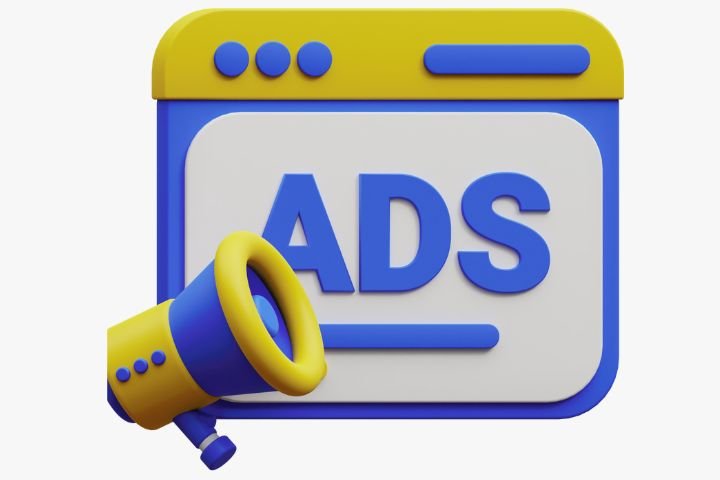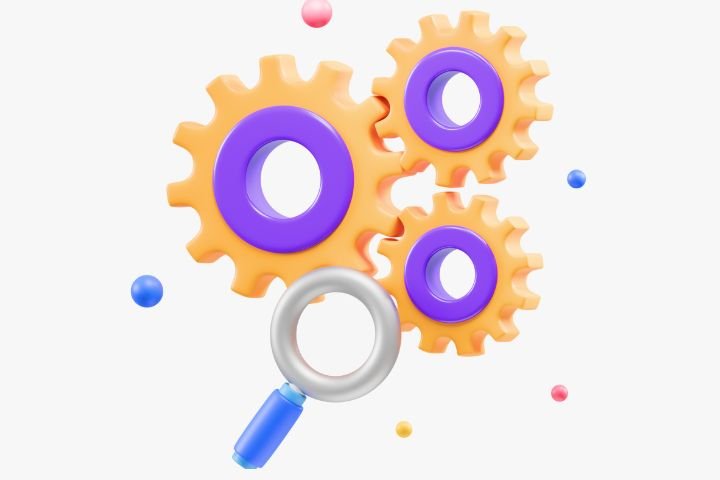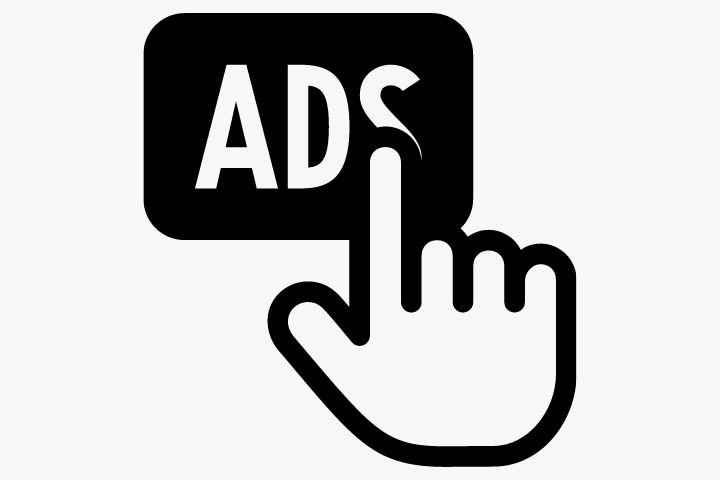Maximize site potential: Expert Google Ads for targeted traffic, higher conversions
What is Google-Ads-Management
Google Ads management services involves overseeing and optimizing Google Ads campaigns to maximize performance and achieve business goals. It includes tasks such as keyword research, ad creation, bid management, and performance tracking. Effective management ensures that ads are reaching the right audience, generating clicks, and converting leads into customers. By continuously monitoring and refining campaigns, Google ads management helps businesses improve their online visibility, drive targeted traffic, and increase ROI.
What is the Functioning of Google Ads Management Services?
Google Ads, formerly known as Google AdWords, is an advertising platform offered by Google that empowers marketers and businesses to showcase their products or services across a spectrum of digital platforms including Google.com, affiliated sites, apps, and various other Google assets. This versatile tool enables businesses to connect with potential customers effectively.
Why Should You Use Google Ads Services?

When considering marketing options, it’s hard to overlook the unparalleled advertising potential Google offers to businesses, regardless of their scale or industry. With its vast audience, Google presents an enticing opportunity for businesses to showcase their offerings effectively.
For those venturing into online advertising, Google AdWords, now known as Google Ads, naturally rises to the top of the list. This platform stands out as a reliable means to drive quality traffic to your website, especially when potential customers are actively searching for products or services related to your business on Google.
In the realm of marketing, Google Ads holds a special place for its ability to connect businesses with relevant audiences seamlessly.
Cost-Per-Click (CPC)
Cost-per-click (CPC) is an advertising model where you pay only when someone clicks your ad. We can help you optimize your CPC campaigns by meticulously researching targeted keywords with strong conversion potential. Our expertise lies in crafting compelling ad copy and landing pages that resonate with your audience, maximizing click-through rates, and minimizing costs. By strategically managing your CPC bids, Multifame ensures you get the most out of your advertising budget.
Cost-Per-Mille (CPM)
Cost-per-mille (CPM) is an advertising pricing model where you pay for every thousand impressions (views) your ad receives. It's ideal for brand awareness campaigns. We can help you optimize your CPM by: Targeting the right audience: We ensure your ads reach the most relevant users, maximizing impressions for qualified viewers. Negotiating placements: We leverage their industry expertise to secure placements with high visibility and cost-efficiency. Tracking and analyzing results: We constantly monitor CPM performance, providing valuable insights to further refine your campaigns and reduce costs. By strategically managing CPM, Multifame Technologies helps businesses achieve maximum brand exposure for a targeted audience.
Cost-Per-Engagement (CPE)
Cost-per-engagement (CPE) is an advertising model where you only pay when users actively interact with your ads. This could be signing up, watching a video, or completing a purchase. We help clients maximize their CPE campaigns by defining valuable engagement actions and leveraging data to target high-intent users. This ensures you get the most out of your ad spend by focusing on users who are more likely to convert.
Are you in search of Google Ads services to boost your business's marketing efforts?
Running successful Google Ads Management campaigns requires a deep understanding of each component involved. It’s not merely about setting up ads; it’s a process that demands dedicated time and effort. From crafting effective campaigns to analyzing performance, exploring various keyword combinations, and ensuring every aspect is optimized, there’s a lot that goes into it.
Navigating through these tasks can be daunting, but when managed effectively, they harmonize to deliver desired outcomes for your business. If you’re seeking to maximize the potential of your Google Ads Management, consider the holistic approach we offer, where we handle the complexities while keeping your goals at the forefront. Let’s work together to elevate your online presence and drive meaningful results for your business.
Before diving into your Google Ads campaign setup, it’s essential to configure email notifications. These notifications serve as your eyes and ears, keeping you informed about every crucial development.
When setting up notifications, consider which actions warrant alerts. Some marketers prefer receiving notifications only for significant issues, while others prefer a more comprehensive approach, staying updated on every aspect of their ad campaigns.
Are you frustrated with lackluster Google Ad performance? Unleash your potential with our cutting-edge Google Ads Management Guide. Discover how to optimize your campaigns and achieve outstanding results.

The process we follow for managing Google Ads is as follows:
Once you’ve set up your Google ads through AdWords, managing them effectively becomes paramount. Optimizing your Google ads campaigns is crucial for achieving the best possible results. Here are a few steps to ensure you’re maximizing the impact of your ads:
- Continuous Monitoring: Keep a close eye on your ads’ performance regularly to make necessary adjustments.
- Keyword Refinement: Refine your keyword selection to ensure they align closely with your target audience’s interests and search queries.
- Ad Copy Enhancement: Continuously improve your ad copy to make it more compelling and engaging for potential customers.
- Bid Management: Adjust your bids strategically to ensure you’re getting the most out of your budget while still reaching your desired audience.
- Ad Extensions Utilization: Make use of ad extensions to provide additional information and incentives for users to click on your ads.
- Landing Page Optimization: Ensure that your landing pages are optimized for conversions, providing a seamless experience for users who click on your ads.
By following these steps and keeping a human touch in your approach, you can optimize your Google ads management campaigns for maximum effectiveness and achieve better results for your business.
Keep track of the performance of your Google Ads Management Services
Effective Google Ads Management involves closely monitoring ad performance to understand what works and what doesn’t. Keep an eye on your ads, evaluate their effectiveness, make adjustments, analyze data, and adapt strategies accordingly for better results.
Click-through rate (CTR)
Impressions
Ad clicks
Average Cost-per-conversion (CPA)
Ad conversions
Ad Cost

Add Clicks
Boost Clicks with Strategic SEO by Multiframe Technologies
High search rankings are great, but clicks are what convert visitors into customers. We go beyond just ranking to craft compelling SEO strategies that drive clicks. Here’s how:
- Intriguing Titles & Descriptions: We craft clear, concise titles and meta descriptions that pique user interest and entice clicks.
- Targeted Keywords: We use relevant keywords that users actively search for, increasing the likelihood of your content appearing in those searches.
- Rich Snippets & Structured Data: We optimize your website to display rich snippets in search results, providing users with valuable information at a glance and encouraging clicks.
- Local SEO Optimization: For local businesses, we ensure optimized listings and targeted local keywords to attract nearby searches.
We understand that clicks are crucial for success. Our data-driven approach and SEO expertise help your website not just rank high but resonate with users, driving traffic and achieving your business objectives.
Impression
Impressions refer to the number of times your website appears in search results. In SEO (Search Engine Optimization), impressions play a crucial role in driving website traffic. The higher your website ranks, the more impressions you garner, increasing the likelihood of users clicking through.
We, as an SEO expert firm, help clients maximize their impression share by implementing strategic optimization techniques. Here’s how:
- Keyword Targeting: We meticulously research relevant keywords with high search volume but lower competition, ensuring your website shows up for the terms users actively seek.
- Content Optimization: Our team crafts compelling content that resonates with your target audience and integrates those powerful keywords organically. This improves your website’s relevance to search engine algorithms.
- Technical SEO: Multifame optimizes your website’s structure and code for search engines to effectively crawl and index your pages. This ensures your website is easily discoverable by search engines, boosting your impressions.
By implementing these data-driven strategies, Multifame significantly increases your website’s visibility in search engine results pages (SERPs), leading to more impressions and organic traffic.


Cost
Getting the most out of Google Ads isn’t just about throwing money at it. It’s about understanding your Cost Per Click (CPC)—essentially, how much you’re willing to pay for a single click on your ad. This figure isn’t straightforward; it’s influenced by various factors like your ad’s quality, chosen keywords, and landing page. Your bid sets the maximum amount you’re willing to spend to secure that click, while your ad’s quality score determines its relevance and placement.
Managing Google Ads effectively means finding the sweet spot where your bid meets your ad’s quality, ensuring you get the most bang for your buck. It’s a balancing act that requires attention to detail and constant optimization.
Conversion
When a visitor completes a desired action on your landing page or website instead of just browsing the search engine results page, it’s known as a conversion.
For instance, imagine you’re promoting an online store through an ad. You hope people not only see the ad but also click on it and ultimately buy a suit from your landing page.
In simpler terms, a conversion is when someone goes from just looking to actually taking action, like making a purchase or signing up for a newsletter. It’s like turning a curious browser into a satisfied customer.


Click through rate
Click-through rate (CTR) refers to the percentage of users who see your website listing in search results and click on it. A high CTR signifies your listing is enticing users. Here’s how to improve it:
Craft compelling headlines & descriptions: Use clear, concise language incorporating relevant keywords to accurately reflect your content and grab user attention.
Utilize rich snippets: Schema markup can display star ratings, pricing, or event details, making your listing stand out.
Target long-tail keywords: Focus on specific user queries to attract highly relevant traffic more likely to click.
At Multifame Technologies, we go beyond basic SEO to optimize your CTR. Our data-driven approach helps identify user intent behind searches and craft targeted headlines and content, significantly boosting your website’s click-through rate.
CTR = number of clicks/number of impressions x 100
The Click-Through Rate (CTR) typically hovers around five percent, but there’s plenty of room for variation, and many advertisers have achieved impressive results even with lower rates.
Tracking Conversion in google Ads
Let’s clarify some terms before we dive into monitoring conversions in Google Ads.
Conversions are significant actions that potential customers take after interacting with your ads. These actions can vary widely, from engaging in live chat to making phone calls, clicking links, watching videos, or filling out forms.
To monitor conversions effectively, you need to define what actions count as conversions for your business. Then, set up tracking tags to monitor when these actions occur. Finally, select an attribution model to understand which ads or keywords are driving these conversions effectively.
we’ll walk you through it step by step.
Conversion Tracking
Monitoring the completed conversion activities associated with your account and identifying the advertisements responsible for them is referred to as conversion tracking. This vital process ensures that you stay informed about the effectiveness of your advertising efforts and helps you optimize your strategies for better results.
Attribution Moduling
In setting up your conversion tracking, an essential factor to consider is the attribution model. This model plays a crucial role in determining how your conversions are measured. It helps decide which advertisement or advertisements deserve credit for a conversion when a user engages with multiple ads before taking action. By understanding and choosing the right attribution model, you ensure proper acknowledgment of the various touchpoints in your advertising journey, ultimately optimizing your campaign's effectiveness.
Google Tag
Imagine a nifty code snippet nestled snugly within your website, gracefully bridging the gap between it and your Google Ads account. This ingenious piece of coding wizardry ensures seamless transmission of completed actions back to your Google Ads haven. It's like having a trusty liaison, ensuring that your website and ads synchronize harmoniously.
Conversion Value
In the realm of conversion activities, there exists a pivotal choice allowing you to attribute a distinct value to a particular action. This decision holds sway over your account's bidding strategies, including the setting of maximum conversion value. By imbuing actions with specific worth, you gain the power to shape your campaign's trajectory and optimize its performance with a personal touch.
Landing Page Optimization
While Google ad campaigns often focus on appearing prominently in search engine results, it’s crucial not to overlook the importance of optimizing your landing page. Many advertisers experience a common challenge: they receive impressions and clicks on their ads, yet fail to convert leads into customers. This often stems from an inadequately optimized landing page. Neglecting this aspect of Google ad management can result in decreased ad relevance, leading to lower ad positions.
Optimizing your landing page involves a holistic approach, taking into account various elements such as the ad headline, page layout, button placement, and calls to action (CTA). A reliable method for achieving this is through A/B testing.
By continually refining and testing these elements, you can enhance the user experience and increase the likelihood of conversions. Remember, a well-optimized landing page not only improves your ad’s performance but also enhances the overall effectiveness of your digital marketing efforts.
FAQs About Google Ads Management
While it's not mandatory to hire an agency for managing your Google AdWords campaign, partnering with a skilled agency can offer numerous benefits. Agencies bring expertise and experience to the table, helping you navigate the complexities of AdWords effectively. They can craft tailored strategies, optimize your campaigns for better performance, and provide valuable insights to maximize your ROI. Ultimately, the decision depends on your resources, expertise, and the level of involvement you desire in your campaign management.
Off-page SEO involves enhancing a website's authority and visibility outside its domain. Key elements include
- link building
- social media engagement
- online reputation management
- influencer marketing
- content marketing
- local SEO, and guest blogging. These strategies help improve search engine rankings and drive organic traffic.
Off-page SEO holds significance as it extends beyond the confines of your website, influencing its visibility and authority on search engines. Through strategic off-page optimization, such as building quality backlinks and fostering a strong online presence, your website gains credibility and trustworthiness in the eyes of search engines like Google. This, in turn, enhances its ranking potential, driving organic traffic and boosting overall online visibility. Off-page SEO acts as a powerful ally in expanding your website's reach and establishing its prominence within the digital landscape.
On-page SEO involves optimizing elements within the website itself, like content and HTML structure, while Off-page SEO focuses on activities outside the website, such as link building and social media marketing, to improve its authority and online presence. Both strategies are crucial for enhancing a website's visibility and success in search engine rankings.
The timeframe for observing results from Off-Page SEO efforts varies depending on multiple factors, such as the competitiveness of your niche, the quality of your backlinks, and the consistency of your optimization efforts. Generally, noticeable improvements may start to emerge within a few weeks to several months after implementing Off-Page SEO strategies. However, it's important to understand that building a strong Off-Page SEO profile is a continuous process that requires patience and ongoing effort. With consistent and high-quality backlink building, coupled with other Off-Page SEO tactics, you can expect to see significant improvements in your website's search engine rankings and organic traffic over time.
Not all backlinks are beneficial for SEO. While backlinks can enhance your website's authority and visibility in search engine results, the quality and relevance of the backlinks matter greatly. High-quality backlinks from authoritative and relevant sources can significantly boost your SEO efforts. Conversely, low-quality or spammy backlinks can harm your website's reputation and potentially lead to penalties from search engines. Therefore, it's essential to focus on acquiring high-quality backlinks from reputable websites within your niche to maximize the positive impact on your SEO performance.
